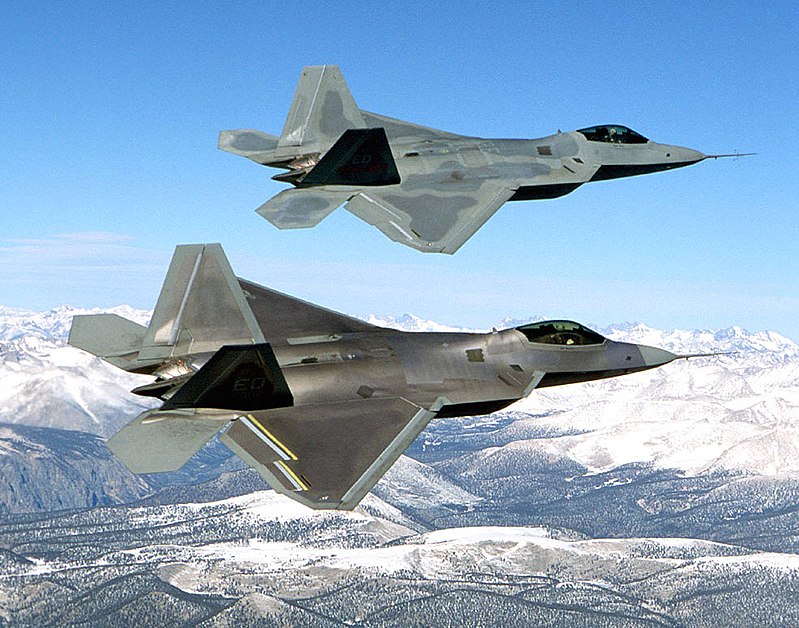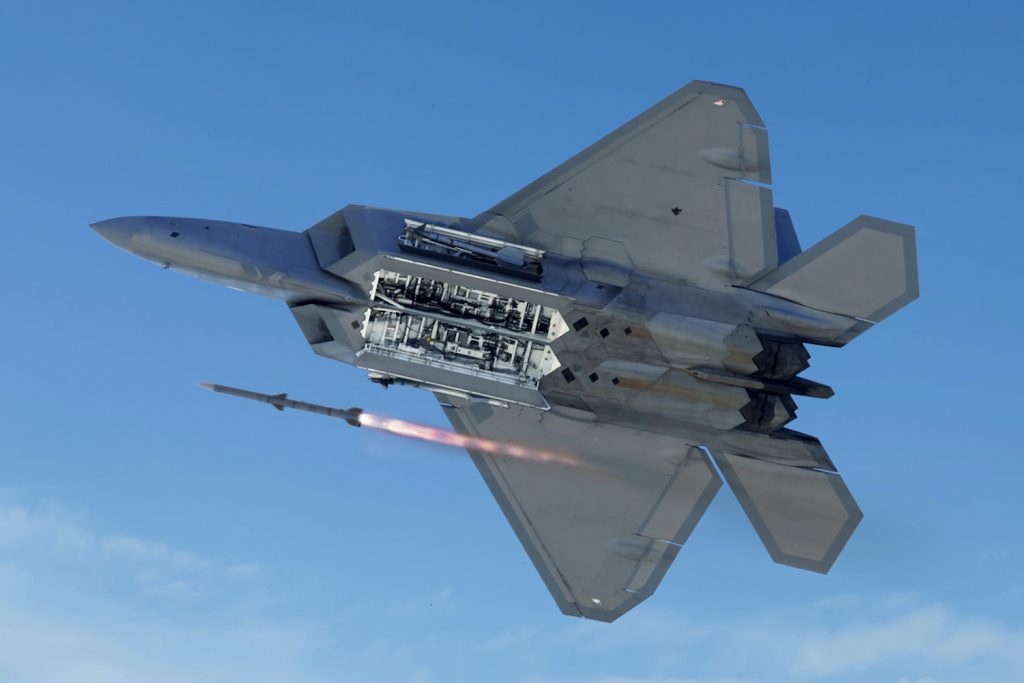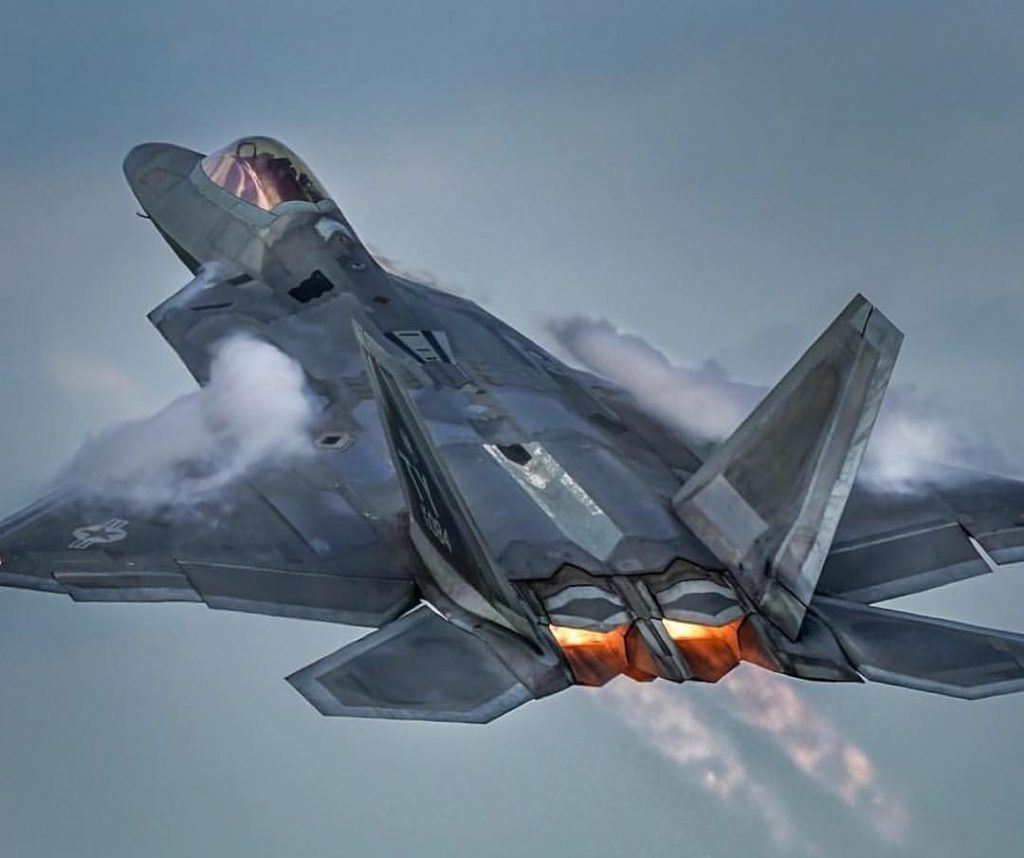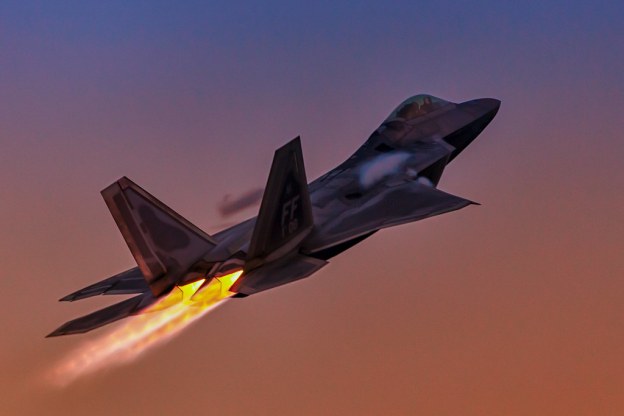The Lockheed Martin F-22 Raptor is the result of a project that began all the way back in 1981.

The Lockheed Martin F-22 Raptor is a single-seat, twin-engine, all-weather stealth tactical fighter aircraft developed for the United States Air Force.
The result of the USAF’s Advanced Tactical Fighter (ATF) program, the aircraft was designed primarily as an air superiority fighter, but also has ground attack, electronic attack, electronic warfare and signal capabilities. The prime contractor, Lockheed Martin, built most of the F-22’s airframe and weapons systems and conducted final assembly, while Boeing provided the wings, aft fuselage, avionics integration, and training systems.

It entered military service in 2007, and delivered its final aircraft in 2012.
At around US$150 million a pop, the F-22 offered a killer combination of smart weapons systems, supersonic top speeds up to and over Mach 2 (with afterburners), radar-dodging stealth capabilities, ultra-lightweight titanium alloy construction and exceptional situational awareness for its pilots thanks to clever sensor fusion technology. And that’s not to mention its insane agility; its 70,000-odd pounds of thrust could be vectored incredibly quickly to pull supernaturally tight manoeuvres.
The aircraft’s dual Pratt & Whitney F119 -PW-100 augmented turbofan engines are closely spaced and incorporate pitch-axis thrust vectoring nozzles with a range of ±20 degrees; each engine has maximum thrust in the 35,000 lb (156 kN) class. The F-22’s thrust-to-weight ratio at typical combat weight is nearly at unity in maximum military power and 1.25 in full afterburner.
In simulated air-to-air combat exercises over Alaska in 2006, a “blue” force including 12 Raptors smashed a “red” force without them, downing 241 planes while losing only two. Both of those two was an F-22, and the 12 Raptors recorded 108 kills just by themselves.
The French reckon they’ve out maneuverer the odd F-22 in combat exercises, but it remains the most fearsome dogfighter ever developed.
Its stealth capabilities gave it the radar signature of a bumblebee, but its weapons systems gave it a rather more impressive sting.

Of course, by the time it was ready for active duty, the face of war had changed substantially. The greatest air superiority fighter in history found itself flying about with precious little over which to assert its superiority. In terms of actual combat, it’s intercepted the odd Russian bomber, dropped a few bombs on Syria and blew up some opium in Afghanistan – and otherwise it’s been a terrific deterrent; just parking a few F-22s in a particular area makes any air operation start to look extremely expensive to enemies.
So while it’s never had – and indeed may never get – the chance to dominate a dogfight the way it was designed to, the F-22 remains in service. The original US Air Force order of 750 aircraft was eventually cut back to just 187, and those will likely endure through 2030 with a few upgrades applied.
The F-22 was designed for a service life of 8,000 flight hours, with a $350 million “structures retrofit program”. In the long term, the F-22 is expected to eventually be succeeded by a sixth-generation jet fighter.


